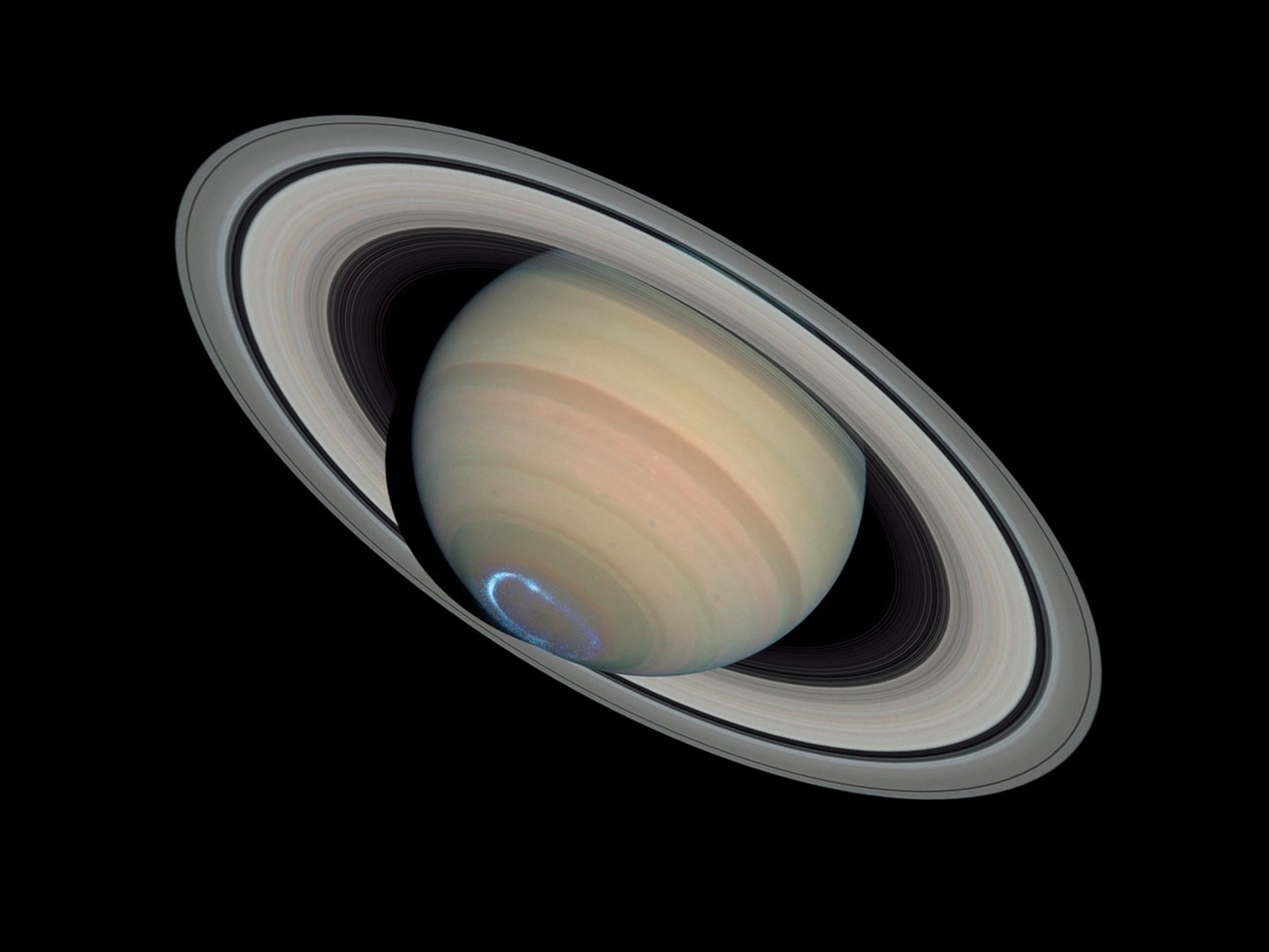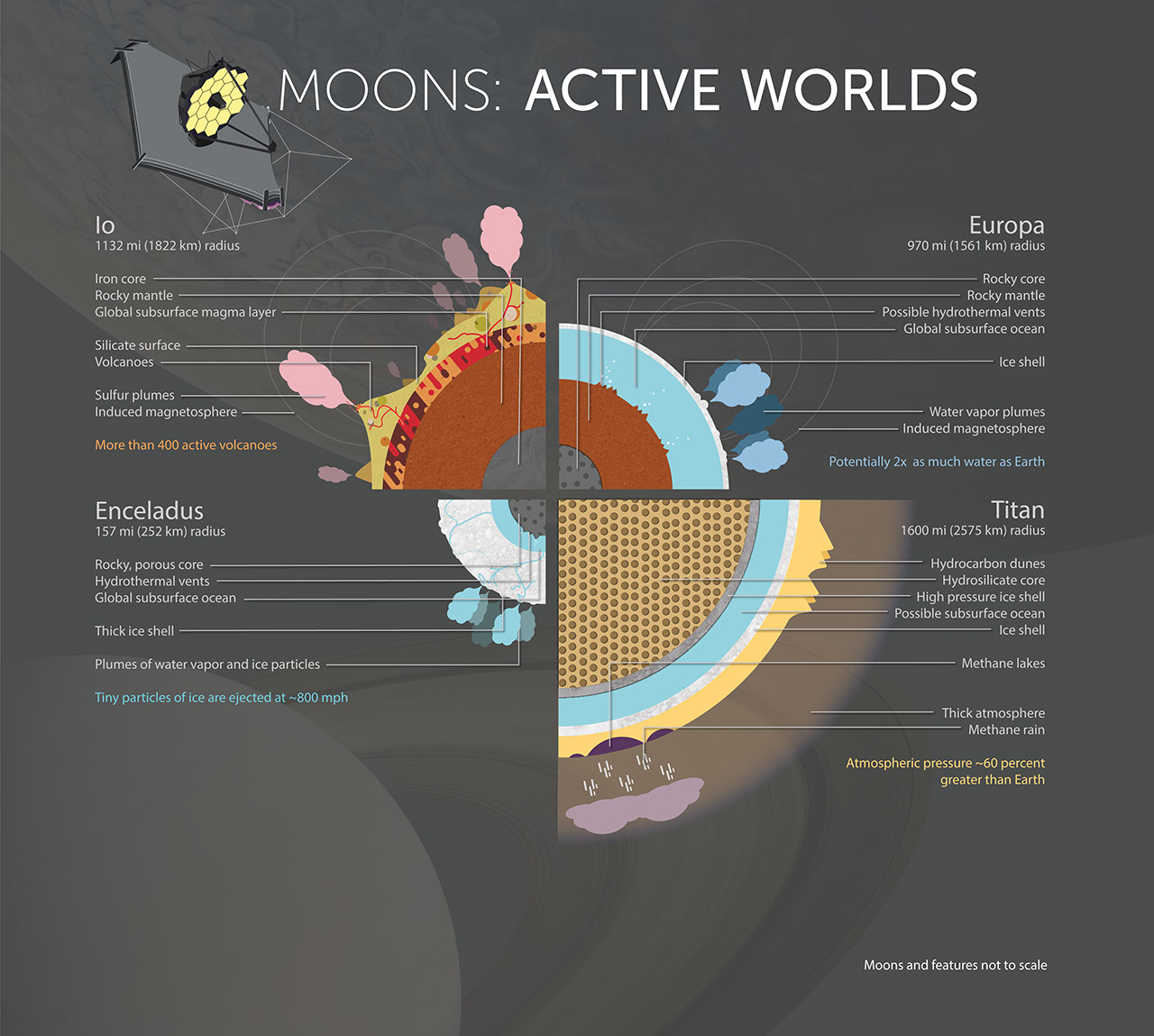1 min read
Saturn and Its Aurora (Hubble)

Saturn experiences auroras, also known as northern and southern lights, just like Earth. Here, Hubble ultraviolet-light observations of an aurora are superposed on a visible-light image of the planet.
About the Object
- DistanceDistanceThe physical distance from Earth to the astronomical object. Distances within our solar system are usually measured in Astronomical Units (AU). Distances between stars are usually measured in light-years. Interstellar distances can also be measured in parsecs.The semi-major axis of Saturn's orbit about the sun is 9.5 Astronomical Units (A.U.) or roughly 1.4 billion km.
- DimensionsDimensionsThe physical size of the object or the apparent angle it subtends on the sky.The planet (without rings) has a diameter of roughly 75,000 miles (120,000 km) at the equator.
About the Data
- Data DescriptionData DescriptionProposal: A description of the observations, their scientific justification, and the links to the data available in the science archive.
Science Team: The astronomers who planned the observations and analyzed the data. "PI" refers to the Principal Investigator.The Hubble image was created from HST ACS data from proposal 9354: E. Karkoschka and M. Tomasko (Univ. of Arizona) and STIS data from proposal 10083: J.T. Clarke (Boston Univ.) and collaborators. The science team includes: J.T. Clarke (Boston Univ.), J.-C. Gerard and D. Grodent (Univ. de Liege), S. Wannawichian (Boston Univ.), J. Gustin (Univ. de Liege), J. Connerney (NASA Goddard Space Flight Center), F. Crary (Southwest Research Institute), M. Dougherty (Imperial College, London), W. Kurth (Univ. of Iowa), S.W.H. Cowley and E.J. Bunce (Univ. of Leicester), T. Hill (Rice Univ.) and J. Kim (Yonsei Univ., Seoul, Korea) - InstrumentInstrumentThe science instrument used to produce the data.HST>ACS/HRC and HST>STIS
- Exposure DatesExposure DatesThe date(s) that the telescope made its observations and the total exposure time.ACS/HRC: March 22, 2004; STIS: January 24, 2004
- FiltersFiltersThe camera filters that were used in the science observations.ACS/HRC: F439W (B), F502N ([O III]), F550W (V), F658N (H-alpha) STIS: 25MAMA (Near-UV) and F25SRF2 (Far-UV)
- Object NameObject NameA name or catalog number that astronomers use to identify an astronomical object.Saturn
- Release DateJune 19, 2019
- Science ReleaseNASA’s Webb Telescope Will Survey Saturn and its Moon Titan
- CreditImage: NASA, ESA, John Clarke (Boston University), Zoltan Levay (STScI)
Related Images & Videos

Moons: Active Worlds
Discover the makeup of four active Solar System moons, worlds unto themselves with unique, dynamic environments. The ice worlds of Europa and Enceladus can be compared and contrasted with methane-rich Titan and fiery Io. How similar or different is each moon from our own active...
Share
Details
Laura Betz
NASA’s Goddard Space Flight Center
Greenbelt, Maryland
laura.e.betz@nasa.gov
NASA, ESA, John Clarke (Boston University), Zoltan Levay (STScI)
































